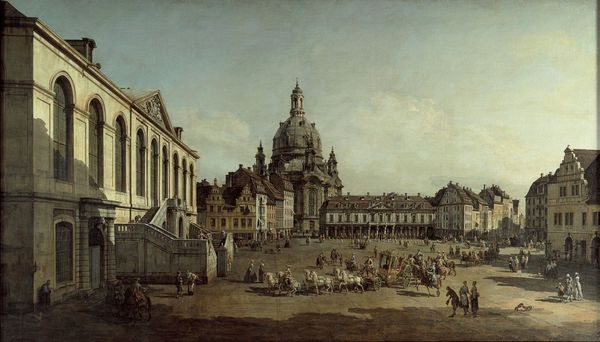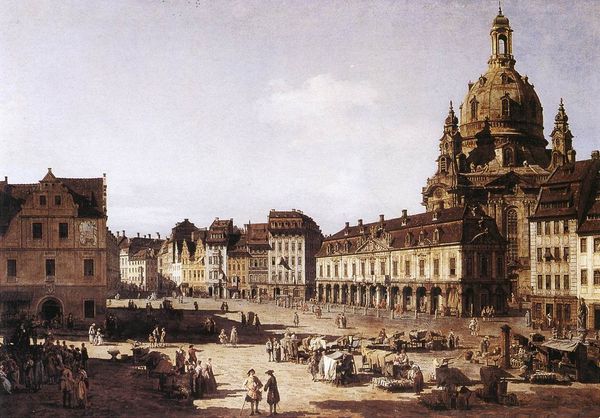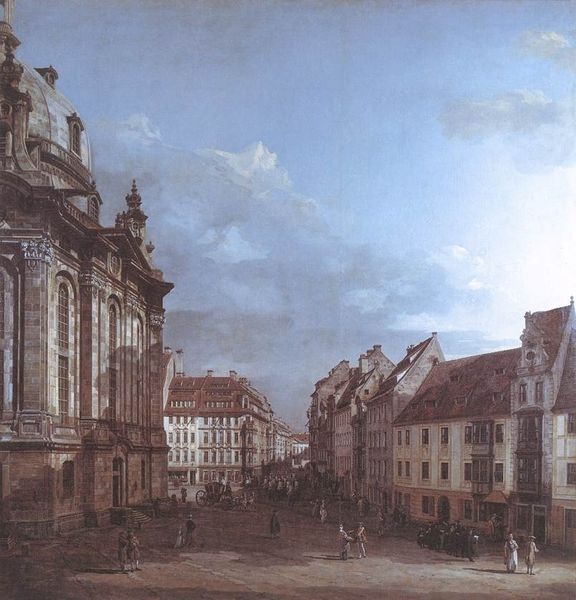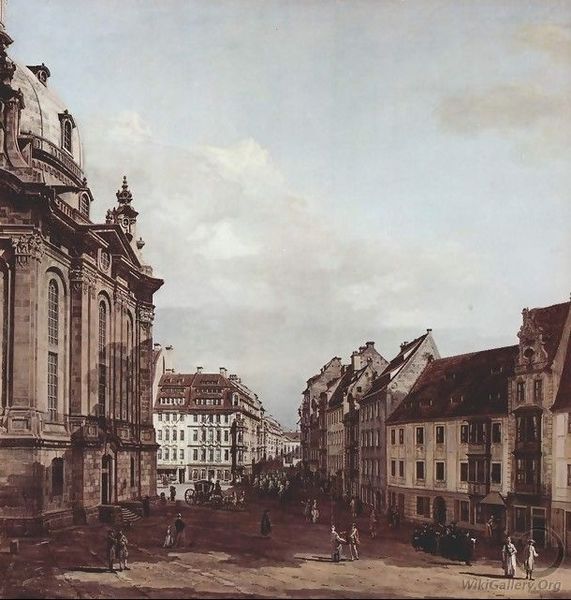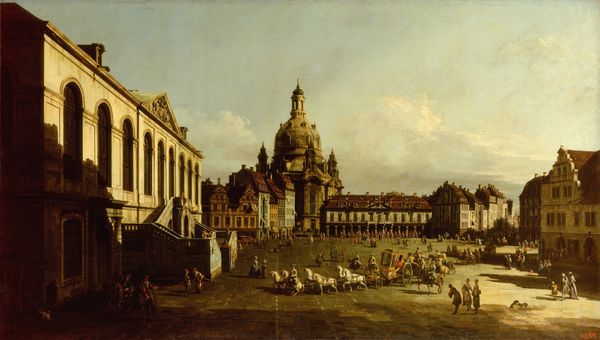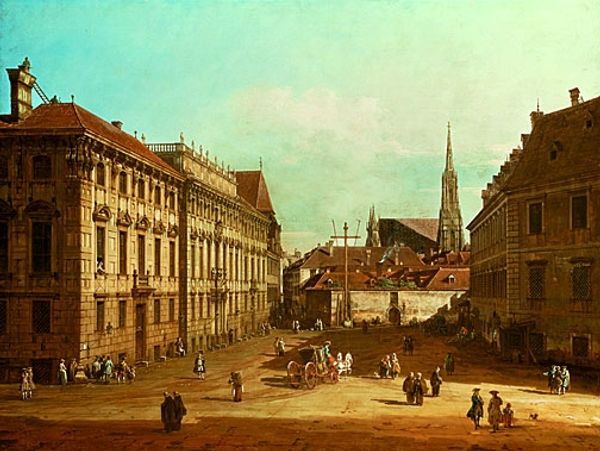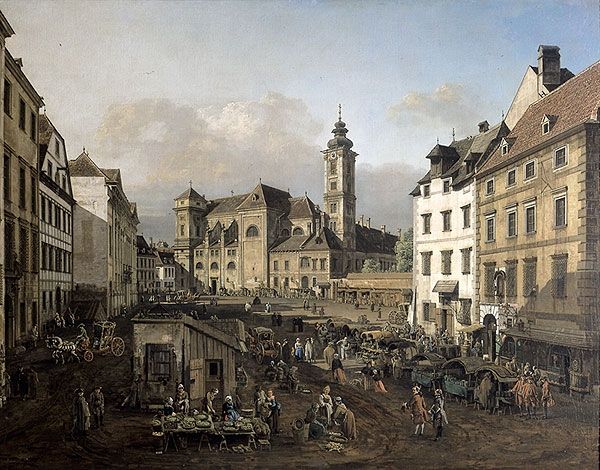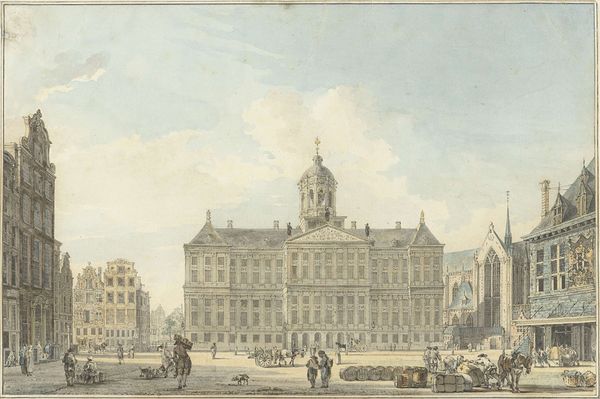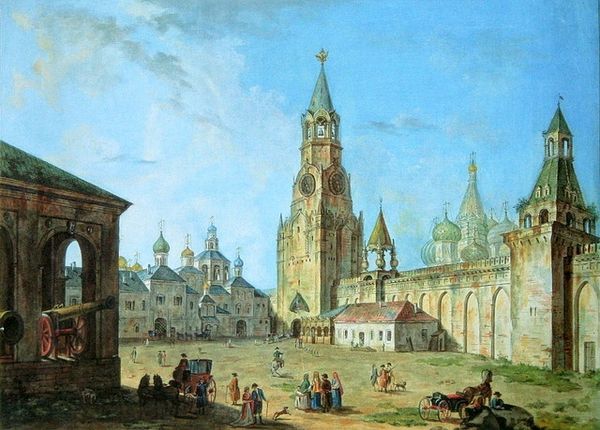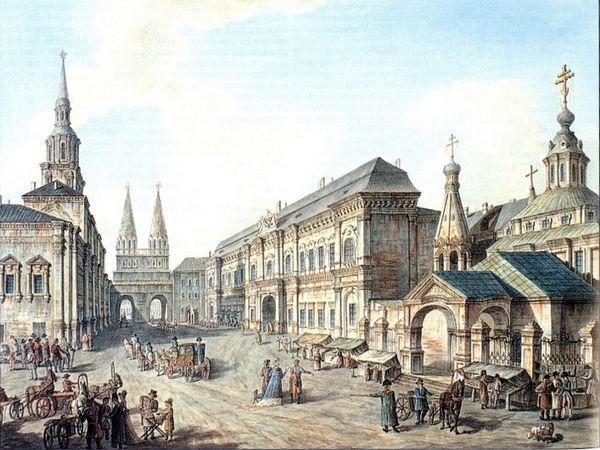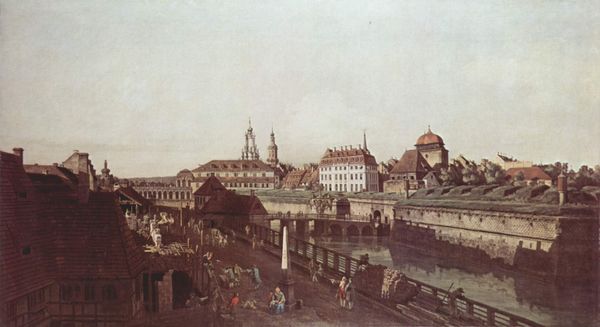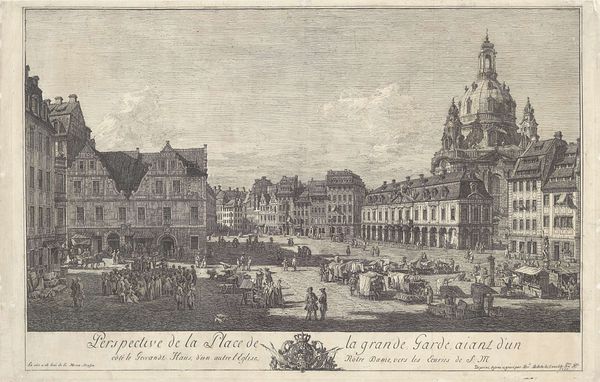
painting, plein-air
#
urban landscape
#
baroque
#
painting
#
plein-air
#
urban cityscape
#
square
#
cityscape
#
genre-painting
#
history-painting
#
building
Dimensions: 136 x 236 cm
Copyright: Public domain
Curator: Bernardo Bellotto's "New Market Square in Dresden from the Judenhof," created around 1750, captures a bustling scene with an incredible eye for architectural detail. It’s painted en plein-air. What are your initial impressions? Editor: Immediately, I see the extensive use of pigments available at the time—earth tones that seem grounded, almost literally dirt-like, contrasting with that overcast, almost oppressively muted sky. It evokes the dust and labor involved in creating and maintaining such an impressive civic space. Curator: Note how the lines converge, leading the eye directly to the Frauenkirche's dome—a superb example of perspective that structures the entire composition. The symmetry, the clear organization of forms, exemplifies Baroque aesthetics. Editor: Yet, if you consider the urban development around the square, and those individualized figures—where did Bellotto source his paints, what were the workshop hierarchies, and what impact did all this public display have on the communities whose lives and labors supported this urban space? These questions intrigue me. Curator: Ah, but it's the formal tension, the balance between grandeur and everyday life, that makes this painting so compelling. Observe how the rigid architectural planes are softened by the figures, adding an element of humanity. The texture within those architectural forms, however meticulously rendered, establishes an intriguing dialog. Editor: And, speaking of figures, what about the unacknowledged labour involved in the paving of the stones, construction of buildings, the manufacture of carriages? To me, this square exists because of layers of human endeavor often swept under the rug of history. Bellotto likely hired assistants to prepare materials, stretching and priming the canvas to ensure an ideal working surface. The canvas, wood, and pigment materials speak to a whole socio-economic system. Curator: Perhaps. But the lasting power of the work is undeniable. Bellotto’s rigorous geometrical framework makes it one of the most iconic examples of cityscape painting. The city becomes legible; its inherent structure laid bare. Editor: Well, and while its power resides within formal and structural integrity, for me its true relevance lies in recognizing the immense labor behind crafting that iconic image. Thanks to the material and historical conditions that underpin Bellotto's creation. Curator: A provocative, yet illuminating, perspective! Editor: Just uncovering different layers of meaning—literally and figuratively.
Comments
No comments
Be the first to comment and join the conversation on the ultimate creative platform.
